Gallery Network
‘Constraint and Control’: Artist Patricia Ayres’s Kinetic Sculptures Are Meant to Be Uneasy
The American artist's works are on view now at Tank Shanghai.
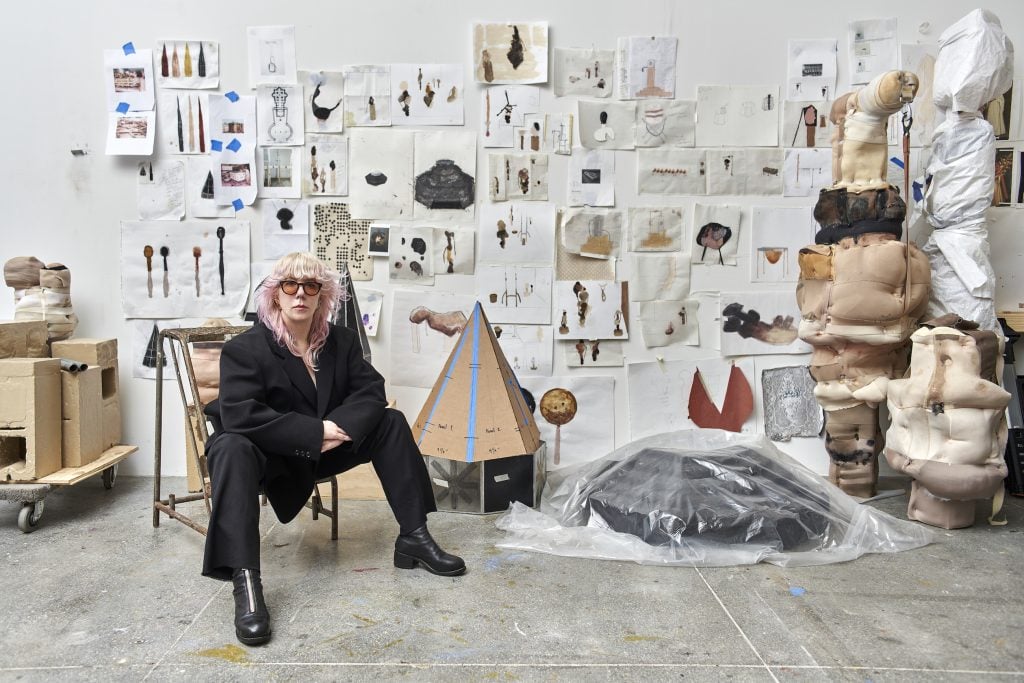
The American artist's works are on view now at Tank Shanghai.

Artnet Gallery Network

Stitched, stuffed, and strapped together, the sculptural work by New York-based artist Patricia Ayres invites circumvention and imaginations of what they might contain. Beginning her academic studies in fashion and career in fashion design, she ultimately to the field of visual art, attending Brooklyn College and Hunter College from her BFA and MFA respectively, as well as attending the Skowhegan School of Painting and Sculpture—but her background in fashion is visually apparent. Weaving the creative lexicon of fashion into her work, Ayres’ sculptures straddle the two practices, which are at once familiar and uncanny.
On view through February 28, 2025, Ayers is the subject of a solo show with Tank Shanghai, China, “Unrequited Remnants,” wherein the artist’s sculptural assemblages operate as conduits of investigation into the conventions and constraints of contemporary society. Tapping the writings of British writer and anthropologist Mary Douglas, specifically her 1996 book Purity and Danger and the concept of “matter out of place,” and Judith Butler’s Bodies That Matter (1993), “Unrequited Remnants” offers a conceptual reflection on ideas around normalcy, acceptability, and visceral physicality.
Ahead of the show, we reached out to Ayers to learn more about what went into creating the show and how her work has evolved.
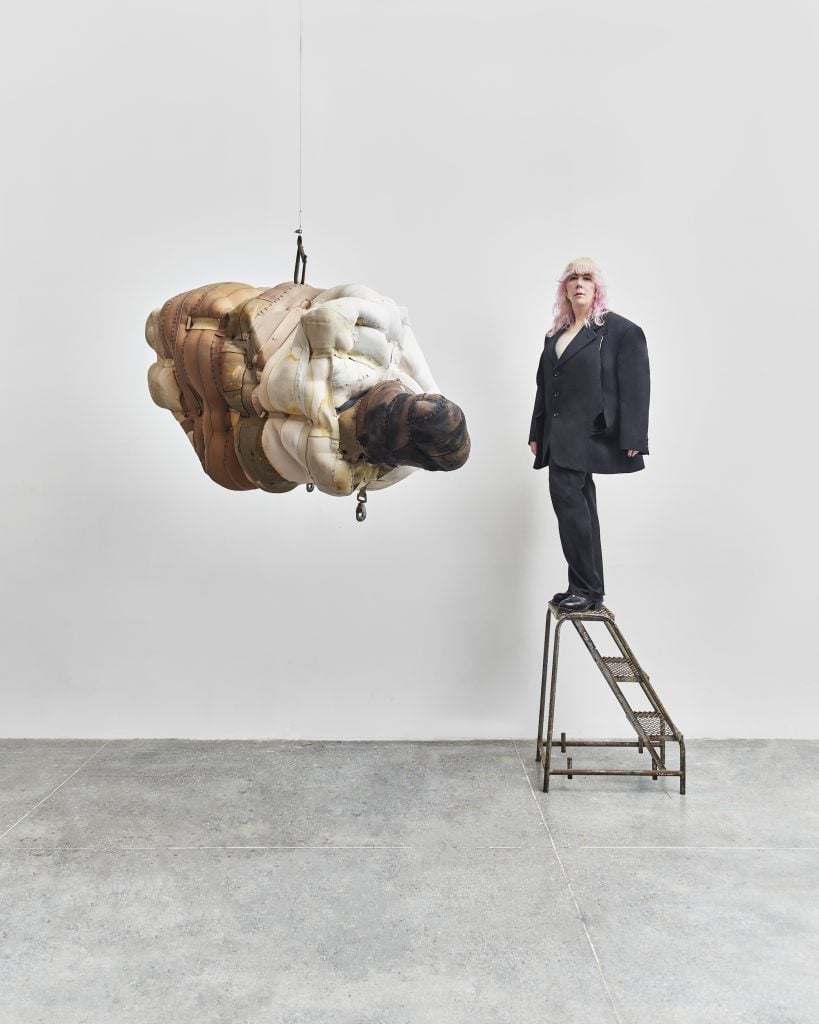
Patricia Ayres with 4-5-3-1-16-9-12-1-2-1-19 (2024). Courtesy of Tank Shanghai.
With your exhibition “Unrequited Remnants” opening early next month with Tank Shanghai, can you talk about the themes and ideas underpinning the show?
Drawing on my knowledge as a fashion designer, I have long considered themes of the body. My sculptures relate to stories of isolation, separation, and confinement. They embody constraint and control. Bound, dirty, and distorted in scale, an implied violence is imposed on the carnal forms advocating a palpable psychological effect of the oppressed body, often female.
How do you see the body of work going on view in this show continuing or diverging from work you’ve done previously?
Creating a kinetic sculpture is divergent from my previous work. 4-5-3-1-16-9-12-12-1-19, which is a suspended work, spins clockwise, slowly and repetitively. I realized I wanted it to rotate after the fans that are set up in my studio caused it to sway. I then decided to work on a video of it moving. After that, it became clear that having it revolve in the exhibition could deepen the content of the work, considering the construct of time and how the viewer’s experience of the work will be altered.
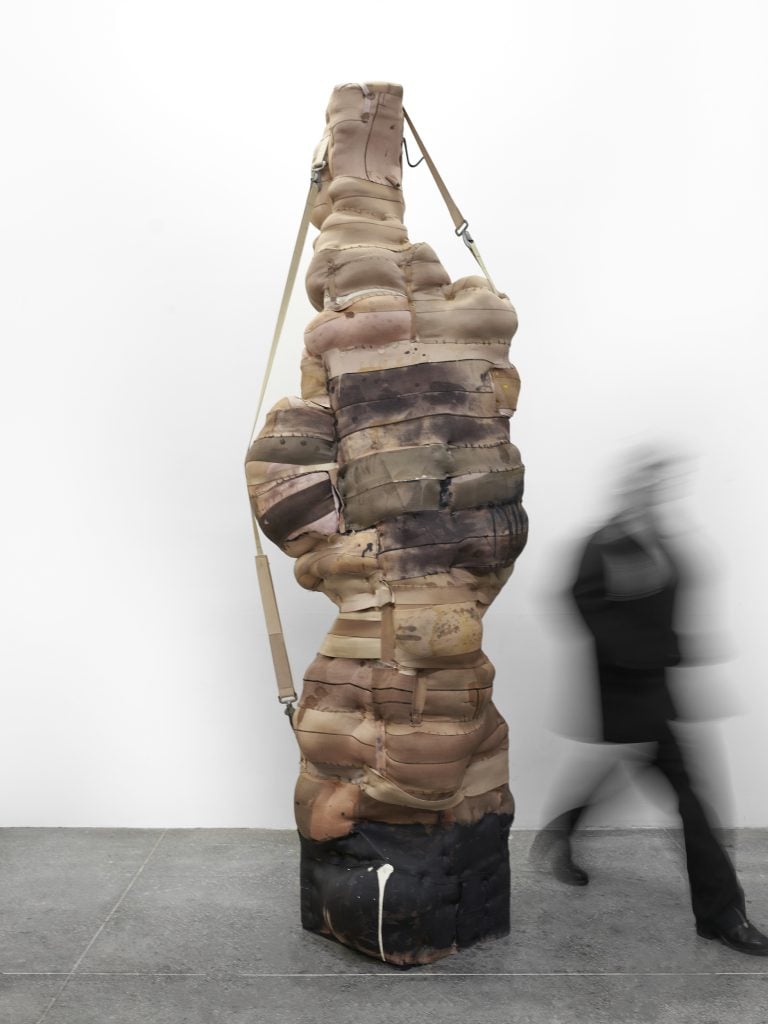
Patricia Ayres, 26-8-1-15-18-15-1-4-7 (2024). Courtesy of Tank Shanghai.
Did the show’s location in Shanghai or the gallery space itself influence or inform your work for “Unrequited Remnants”?
There is a hybridity that I am experiencing by showing my work in China. Not only with the literal exhibiting of my work, but the cultural exchange I am having with the place and its people at this distinct moment in time. Placing my abstract sculptures within the cylindrical structure of a formally abandoned, decommissioned aeronautic metal fuel tank is allowing me to see my work from an entirely new perspective. There is some disorder between the distorted, misshapen, and vulnerable forms of my sculptures against the hard, industrial, strong, and sturdy tanks.
Writing by Mary Douglas and Judith Butler are cited in the show’s press release, how does their work influence your own?
In considering my work to be bound and dirty, it is objecting societal taboos about sexuality, purity, and order. According to “matter out of place,” the sculptures would cross the boundaries of where they belong by virtue of being dirty.
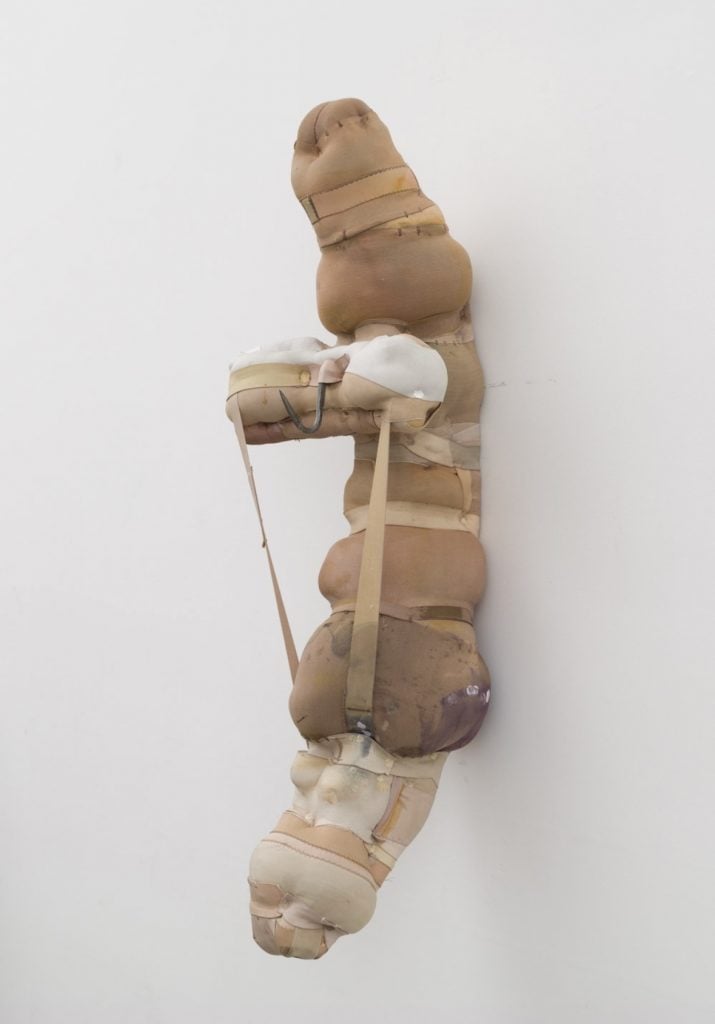
Patricia Ayres, 16-5-18-2-15-25-1-8-5 (2024). Courtesy of Tank Shanghai.
Who are some other writers or artists you find inspirational or intriguing?
I began re-watching Chinese films that I find inspirational while working on this exhibition, including those by Zhang Yimou and Wong Kar-wai. Specifically, Raise the Red Lantern (1991), To Live (1994), Red Sorghum (1987), and In the Mood for Love (2000). I first learned of these works in a film class at Brooklyn College. When you discover art that moves you, it remains with you always.
From a technical standpoint, can you tell us a bit about your practice—where do you start when making a sculptural assemblage? Is it more intuitive as you go or planned out?
I start by building my armatures. This begins to form the scale, shape, and volume of the piece. I simultaneously do drawings, although I never seem to follow them exactly or sometimes not at all, but I use them as a guide to see where I want to go. I may look back at them during the process to push the work. From that point, the work becomes very intuitive. I let the materials tell me what to do.
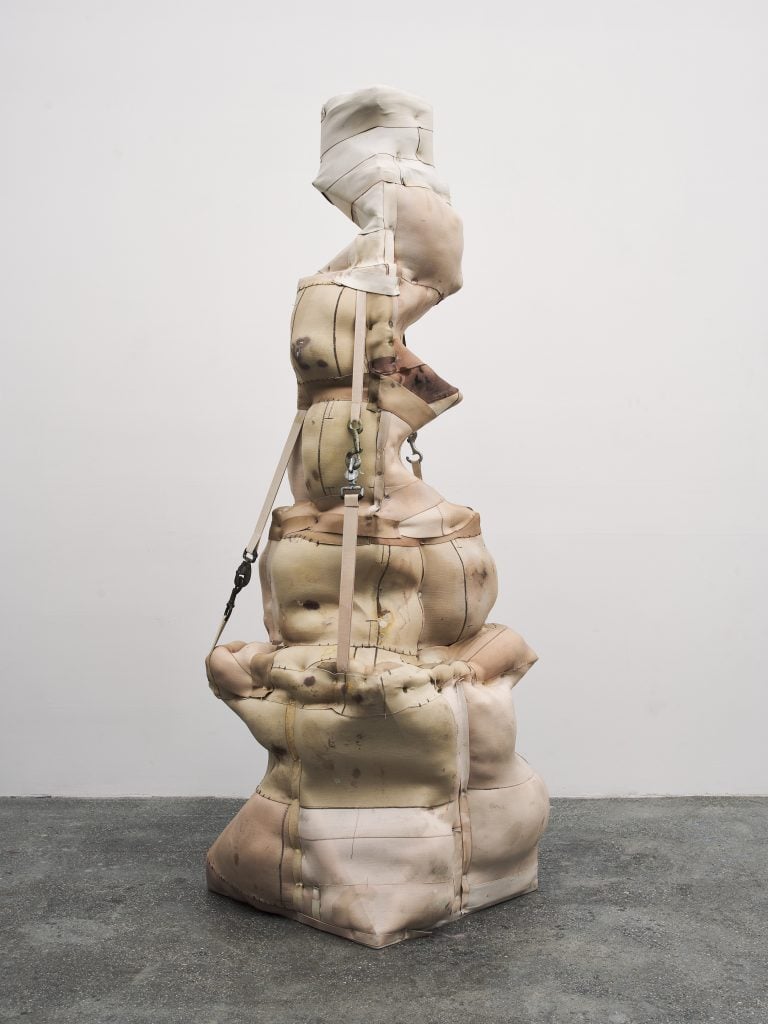
Patricia Ayers, 19-1-2-9-14-1 (2024). Courtesy of Tank Shanghai.
What do you want the viewer experience to be like in this show?
I can guide the audience by giving them insights into my thought process though the titles of the works, the materials that I use and the placement of the sculptures, but I believe the viewer brings their own life experience and personal history to the work.
What do you want visitors to take away with them?
I think the same thing that I desire when looking at work, which is to suspend time for a moment and have my imagination transport me somewhere I’ve never been, to remind me of a feeling or thought I’ve had, or to provoke me in some way.

Installation view of “Unrequited Remnants,” (2024). Courtesy of Tank Shanghai.
Are you working on anything currently that you can tell us about? Or, alternatively, any upcoming projects you can share?
I am working on a solo exhibition for 2025, which will be my first European gallery show in Brussels, Belgium, at Mendes Wood DM.
“Patricia Aryes: Unrequited Remnants” is on view at Tank Shanghai November 6, 2024–February 28, 2025.